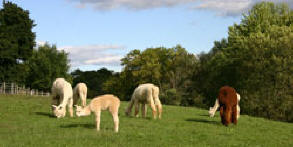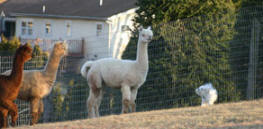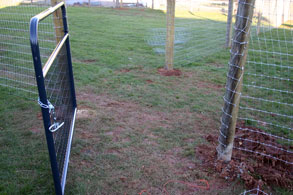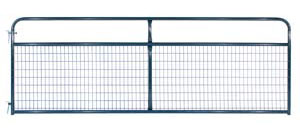|
It seems there will always be something new to learn about
caring for Alpacas. We would like to thank all of the
people who have so graciously shared information so far.
This has been one of the aspects of joining this community
that has been so refreshing to us. Everyone has always
seemed genuinely interested in our success. I have
told many people before, but I am still intrigued by the
idea, that this is the ONLY industry that I can name that
thrives on creating and supporting competition. So it
is with that thought in mind that I do my part here by
sharing the things we have learned along the way.
We plan to extend this learning site with multimedia modules
as we go, since that IS
the business we're
in. We invite you to come back often, both here and by
visiting our
BLOG. And along the way, if you have information
you'd like to share,
please let us know. We'll pass it along.
Pastures...

Almosta Ranch Alpacas
In our travels so far, we've seen a great variety in pasture
arrangements and types of land used for grazing Alpacas.
We have seen everything from flat, well irrigated pastures
to animals picking their way through partially wooded fields
to dry-lot farms where all of the food reaching animals
comes in the way of baled hay and grain brought in daily.
 Alpacas
will thrive in a number of situations considering the
topography in their land of origin. You can easily graze
5-10 Alpacas per acre of good grass, although I think it
would be difficult to manage and seemingly more
labor-intensive. We have started our herd with four
females and two weanling males on approximately 3 acres of
rolling grassland with a mix of various types of grasses.
We haven't had it analyzed at this point, since we have such
a small herd on a large parcel. Alpacas
will thrive in a number of situations considering the
topography in their land of origin. You can easily graze
5-10 Alpacas per acre of good grass, although I think it
would be difficult to manage and seemingly more
labor-intensive. We have started our herd with four
females and two weanling males on approximately 3 acres of
rolling grassland with a mix of various types of grasses.
We haven't had it analyzed at this point, since we have such
a small herd on a large parcel.

Take2 Alpacas & Max,
our son
Fences...

Our Alpha Female and the neighbor dog
spar across the fence.
The first consideration in choosing appropriate fence
material is deciding what you need to keep OUT.
Alpacas, except for aggressive males and unknowing Crias are
not known for testing fences. So your decision for how
secure your fences should be is based on known and suspected
predators in the area. Surprisingly, common housedogs
are some of the most dangerous predators for Alpacas.
With spitting, kicking and running as their only natural
defenses, Alpacas, especially young ones can become easy
prey to dogs. Of course in areas where other wild
animals such as coyotes, wolves or mountain lions exist,
even greater concern should exist for the safety of your
herd.
We have been advised by many that a 5' wire mesh is the best
material for perimeter fences. We have found that
Red Brand Non-Climb Fence is an ideal product for this.
The mesh size is 2" x 4" which is small enough to keep even
the smallest inquisitive head safe from getting tangled in
it.
 When
we bought our farm, it had previously been a horse farm with
6-strand, high tensile electric fence. Beyond the
personal preference, we didn't feel that electric fence was
secure enough. We had heard of Crias getting shocked
and actually going through the fence. Then they were
too frightened of the fence to try to cross again, leaving
them stranded outside the fence line. When
we bought our farm, it had previously been a horse farm with
6-strand, high tensile electric fence. Beyond the
personal preference, we didn't feel that electric fence was
secure enough. We had heard of Crias getting shocked
and actually going through the fence. Then they were
too frightened of the fence to try to cross again, leaving
them stranded outside the fence line.
So our first project was to re-enforce the perimeter and
create smaller pens between the existing barn and the house.
We had learned some valuable lessons while boarding our
first Alpaca. Catching an unwilling animal in a wide
open field is next to impossible. To even the playing
field (pun intended) you want to arrange your work area into
groups of pens, getting smaller and smaller. The
animals will generally head for the barn on command (that's
where dinner is served). If you have designed your
pens correctly, you can coax them into a final pen that is
small enough to catch and harness them for health days and
general training.
Next >>>
|
So here's how we started....
|
|
|
|

|
|
|
|
Existing horse barn with two stalls |
|
|
|
|
|
|
|
|
|

|
|
|
|
After committing the plan to paper, we measured and located post positions. |
|
|
|
|
|
|
|
|
|

|
|
|
|
The first day of construction |
|
|
|
|
|
|
|
|
|

|
|
|
|
Some existing post and rail fences were removed. Others were refurbished. |
|
|
|
|
|
|
|
|
|

|
|
|
|
Heavy equipment made short work of the digging. |
|
|
|
|
|
|
|
|
|

|
|
|
|
The installation crew made it look easy |
|
|
|
|
|
|
|
|
|

|
|
|
|
End of Day One and all the new posts were in. |
|
|
|
|
|
|
|
|
|

|
|
|
|
Wrestling the wire mesh fence |
|
|
|
|
|
|
|
|
|

|
|
|
|
Each section had to be stretched and stapled |
|
|
|
|
|
|
|
|
|

|
|
|
|
Our first snow came early. |
|
|
|
|
|
|
|
The
other thing we learned from our boarding experience is that
you need to plan for several areas to segregate your herd.
Alpacas are "induced ovulators" which means females can get
pregnant at any time. With as much at stake
financially, a sensible herdsman will practice planned
parenthood. The value of an animal can only be
improved by choosing the right male to mate with the right
female (but that's a whole other article). And you
don't want babies born in the dead of winter or the hottest
part o the summer.
A well-planned herd will
consist of several groups:
- Pregnant females,
their young offspring and maidens
- Young males prior to
breeding age
- Older males and herd
sires
- Young males and
females getting weaned from their mother at about 6
months of age
After several weeks, the females can return to the first
group along with their mothers
- Maternity Ward for
near term females
- Post-partum females
and their babies, to make sure they properly bond
- Isolation for animals
recently returning from shows or other farms
- Breeding pen
At this point, we don't need all these due to the makeup of
our herd. But as the herd matures, we will be adding
sections to manage these groups effectively. In some
cases where over-grazing is a concern, additional divisions
of your pasture need to be made to let some areas replenish.
Next >>> |
Gates...

The best and most consistent advice given to me about gates
is "You can NEVER have too many gates". Basically, you
want to plan to move yourself, your animals, and any
equipment efficiently from any point to any other point on
your farm without wasting time and energy. Also, with
well placed gates you can manage your herd, moving them
around as necessary. When in doubt, put in a gate.
During my initial plan, I didn't have two gates that I added
during construction. I use one of them every day and
the other, I know I will use as the herd grows to its next
size.
The type of gate is important for safety reasons. The
gate we chose is called a wire filled gate. The brand
name is Tarter.

Small and over-eager animals can get caught in gates
where the mesh isn't a part of the design. In cases
where you have existing gates that don't have this mesh, you
can retro-fit them using the less-expensive 2" x 4" welded
wire mesh, available at home centers. By cutting the
mesh to fit and attaching with plastic cable ties, you can
accomplish the same result without the expense of replacing
the gates.
Feeding...
 Alpacas
will generally be happiest (in our experience) grazing from
naturally occurring grasses. We literally fenced in
about half of our back yard to allow the animals to graze
that area, since it was close and convenient to the barn.
In addition to free grazing, we provide hay and grain.
We've been advised to use second cut orchard grass, and so
far it has worked very well. I have read in other
forums that other grasses work as well. The grain is a
special blend similar to a molasses type feed for horses,
but milled especially for Alpacas. We feed a cup per
animal twice a day. Everyone shows up for the grain,
and in many cases the females fight over who gets to eat
first. Of course, fresh water needs to be available.
At this point, our herd is small, so we're using heated
water buckets to keep them from freezing in winter. As
a labor-saver, automatic watering systems are a must for
larger farms. They are also heated for winter use.
Here are some the feeding set-ups we've seen as well as our
own... Alpacas
will generally be happiest (in our experience) grazing from
naturally occurring grasses. We literally fenced in
about half of our back yard to allow the animals to graze
that area, since it was close and convenient to the barn.
In addition to free grazing, we provide hay and grain.
We've been advised to use second cut orchard grass, and so
far it has worked very well. I have read in other
forums that other grasses work as well. The grain is a
special blend similar to a molasses type feed for horses,
but milled especially for Alpacas. We feed a cup per
animal twice a day. Everyone shows up for the grain,
and in many cases the females fight over who gets to eat
first. Of course, fresh water needs to be available.
At this point, our herd is small, so we're using heated
water buckets to keep them from freezing in winter. As
a labor-saver, automatic watering systems are a must for
larger farms. They are also heated for winter use.
Here are some the feeding set-ups we've seen as well as our
own...
|
|
|
|

|
|
|
|
Home-made Cria gate; allows young to get to area with food just for them |
|
|
|
|
|
|
|
|
|

|
|
|
|
Combined hay and grain feeder. 1/2 PVC pipe makes a great grain feeder |
|
|
|
|
|
|
|
|
|

|
|
|
|
Great layout with feeders. Note newborn area in back with heat lamp. |
|
|
|
|
|
|
|
|
|

|
|
|
|
Individual feeder bowls for cria |
|
|
|
|
|
|
|
|
|

|
|
|
|
Our version of feeder with temporary wall. The boards are just stacked and sandwiched on ends. |
|
|
|
|
|
|
|
|
|

|
|
|
|
Open ended PVC pipe (6"). We feel it helps with cleaning out of debris. |
|
|
|
|
|
|
|
|